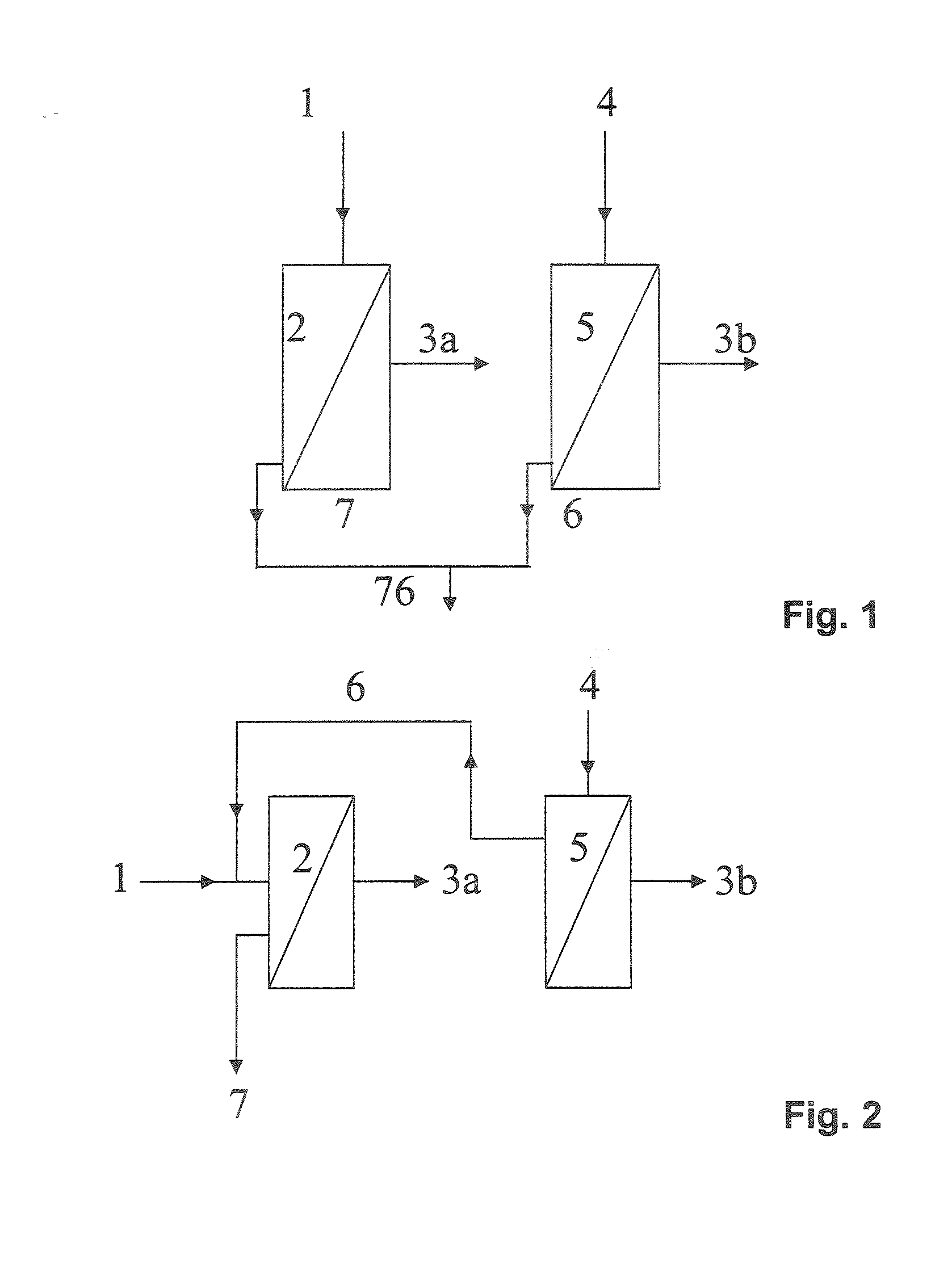Process for dewatering ethanol
a technology of dewatering ethanol and ethanol, which is applied in the direction of separation process, ether preparation, membrane, etc., can solve the problems of reducing the activity of water catalyst, drier ethanol, and reducing the space-time yield of etbe, so as to reduce the need for membrane surfaces and reduce operating costs
- Summary
- Abstract
- Description
- Claims
- Application Information
AI Technical Summary
Benefits of technology
Problems solved by technology
Method used
Image
Examples
examples
[0157]To illustrate the advantages of the inventive connections, two examples are shown. Two streams are to be dried, as can occur in industrial processes, in particular in ETBE preparation:
[0158]A fresh ethanol stream of 10 t / h with a water content of 1% by mass.
[0159]A return ethanol stream of 1.45 t / h with a water content of 9% by mass.
[0160]The target is a residual concentration of 0.3% by mass of water in the dried ethanol.
[0161]The operating temperature was 90° C. A polyvinyl alcohol (PVA) membrane common for ethanol drying was used. For this membrane type, comprehensive test data have been published in the literature (S. Klatt: Zum Einsatz der Pervaporation im Umfeld der chemischen Industrie, Shaker Verlag 1993; M. Franke: Auslegung und Optimierung von Pervaporationsanlagen zur Entwässerung von Lösungsmitteln und Lösungsmittelgemischen, thesis, Aachen, 1990). At 90° C., these membranes attain a pure water flow rate of about 14 kg / m2h (Klatt, 1993). Commercial PVA membranes ar...
PUM
| Property | Measurement | Unit |
|---|---|---|
| temperature | aaaaa | aaaaa |
| pressure | aaaaa | aaaaa |
| temperature | aaaaa | aaaaa |
Abstract
Description
Claims
Application Information
 Login to View More
Login to View More - R&D
- Intellectual Property
- Life Sciences
- Materials
- Tech Scout
- Unparalleled Data Quality
- Higher Quality Content
- 60% Fewer Hallucinations
Browse by: Latest US Patents, China's latest patents, Technical Efficacy Thesaurus, Application Domain, Technology Topic, Popular Technical Reports.
© 2025 PatSnap. All rights reserved.Legal|Privacy policy|Modern Slavery Act Transparency Statement|Sitemap|About US| Contact US: help@patsnap.com



